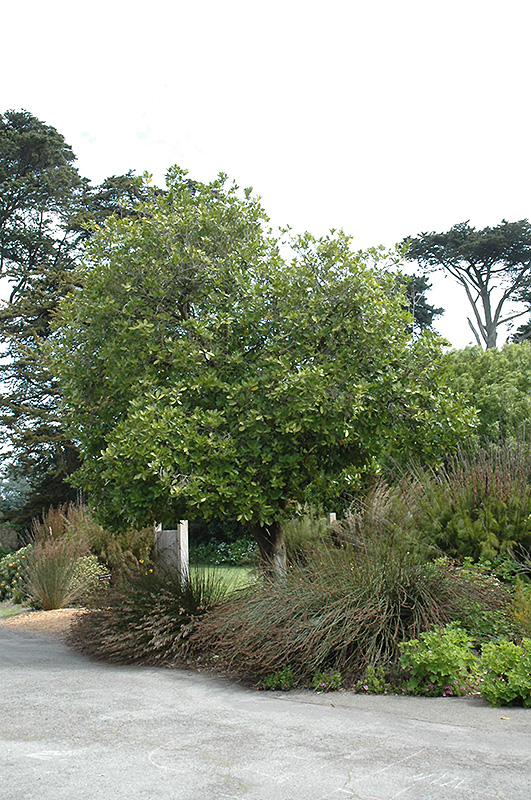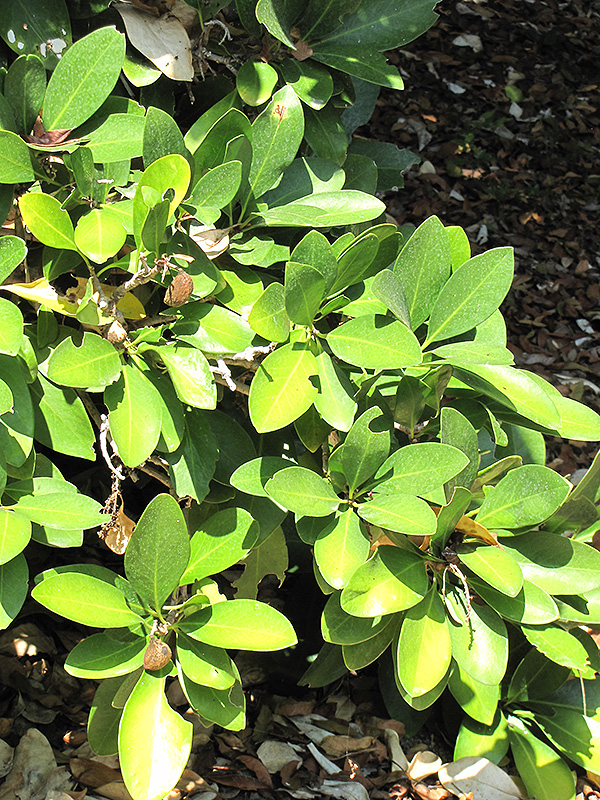Height: 30 feet
Spread: 20 feet
Sunlight:
![]()
![]()
Hardiness Zone: 8b
Other Names: Karaka
Description:
This is a slow growing upright evergreen tree that is densely covered with large, luxurious deep green glossy leaves; small cream flowers are followed by orange berries that are poisonous to consume; a great plant for screening in a shaded area
Ornamental Features
New Zealand Laurel has masses of beautiful panicles of creamy white flowers rising above the foliage in mid spring, which are most effective when planted in groupings. It has dark green evergreen foliage. The glossy oval leaves remain dark green throughout the winter. It produces orange berries in mid summer.
Landscape Attributes
New Zealand Laurel is an evergreen tree with an upright spreading habit of growth. Its relatively coarse texture can be used to stand it apart from other landscape plants with finer foliage.
This is a relatively low maintenance tree, and usually looks its best without pruning, although it will tolerate pruning. It has no significant negative characteristics.
New Zealand Laurel is recommended for the following landscape applications;
- Accent
- Vertical Accent
- Hedges/Screening
Planting & Growing
New Zealand Laurel will grow to be about 30 feet tall at maturity, with a spread of 20 feet. It has a low canopy with a typical clearance of 4 feet from the ground, and should not be planted underneath power lines. It grows at a slow rate, and under ideal conditions can be expected to live for 40 years or more.
This tree does best in partial shade to full shade. Keep it well away from hot, dry locations that receive direct afternoon sun or which get reflected sunlight, such as against the south side of a white wall. It does best in average to evenly moist conditions, but will not tolerate standing water. It may require supplemental watering during periods of drought or extended heat. It is not particular as to soil type or pH, and is able to handle environmental salt. It is somewhat tolerant of urban pollution, and will benefit from being planted in a relatively sheltered location. This species is not originally from North America, and parts of it are known to be toxic to humans and animals, so care should be exercised in planting it around children and pets.



